Today we have two tiny multimeters to take apart and see what we can learn from how their designs progressed:
On the left is Hioki 3217 and on the right – Beckman DM78
The things are very tiny (108mmx54mmx10.2mm), true pocket meters with basic VDC, VAC, Resistance, Diode and Continuity buzzer. The latter even specs a 1mS response time! As I’ve discovered from the discussion on the EEVBlog forum, these are just two out of very many brand names that offered related meters over the year. Some of the other names included Micronta, Universum DM-6511.
Beckman Industrial DM78
The user manual does mention 1990, so we have to assume the meter is at least that old. There is no removable battery compartment, instead a “Hinge” is made from the plastic of the back cover:
With one screw removed, the cover pops out pretty easily:
And now we get to the “money shot”: a fairly clean and well though out design 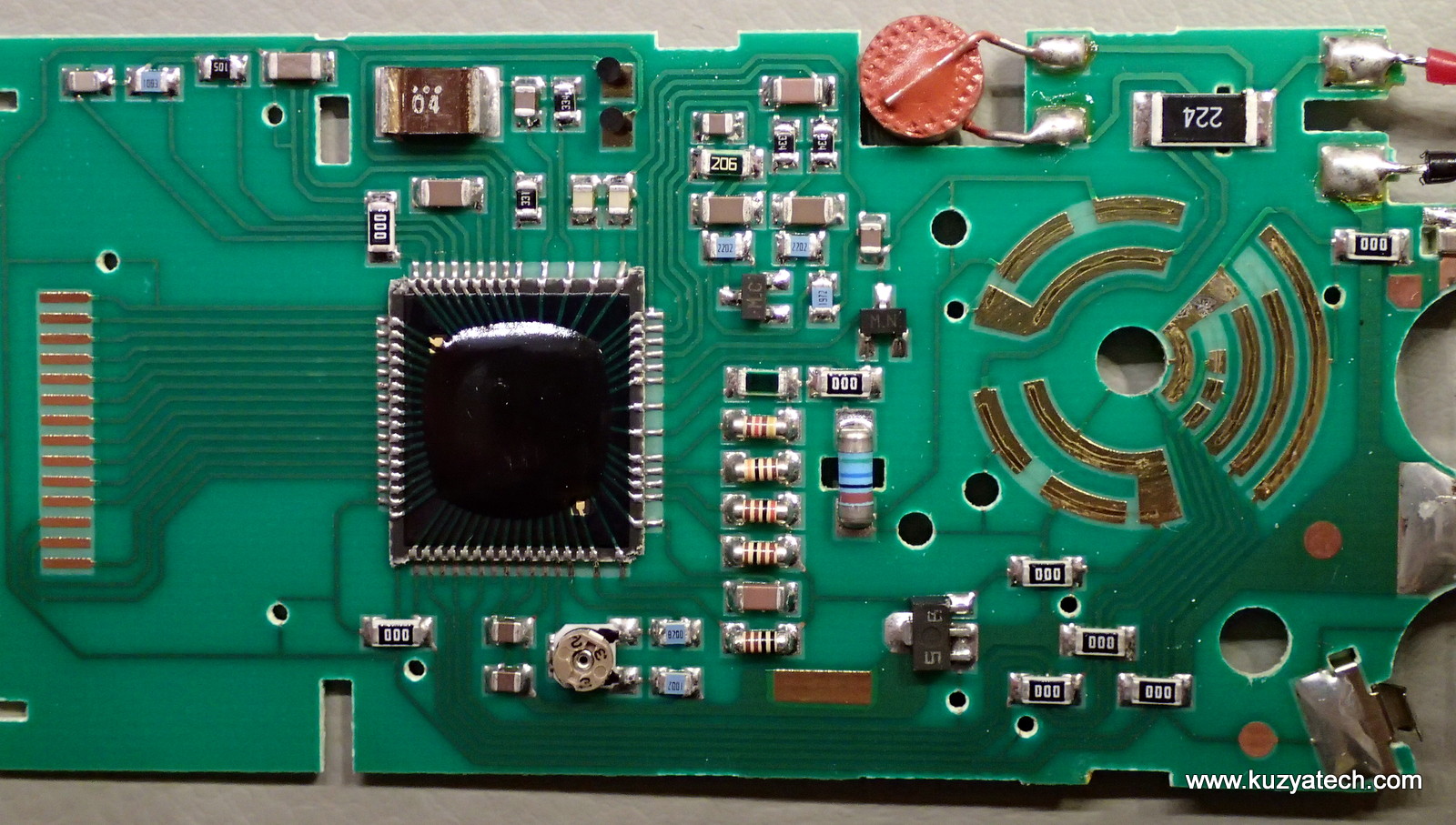
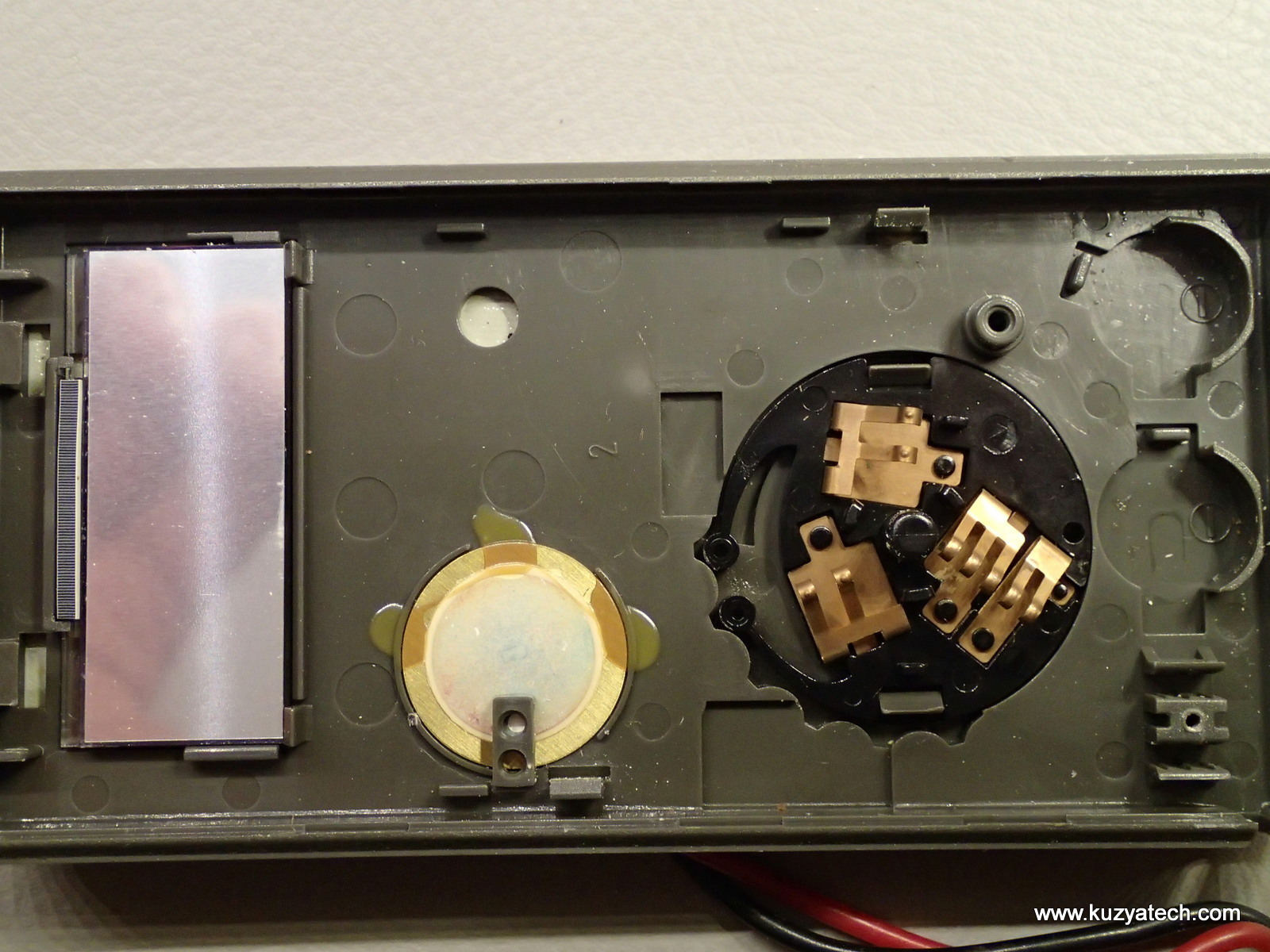
Front cover-LCD with a zebra strip, Buzzer and range switch. Note the adjustment hole above the buzzer, aligning with the pot on the board
Hioki 3217
And now let’s compare and contrast Beckman to Hioki, which most likely was the OEM for both:
Hioki is traditionally pretty transparent as far as the date of production- this one was made in 1986

No bent plastic here but a much less impressive buzzer connection. Display is attached to the board with tabs
And now on to the main board:
Brief testing and conclusion:
Using my trusty DMM Check plus, we can check how well both meters operate 25+ years after manufacturing. Pretty impressive- isn’t it?
| DMM Check Plus | Beckman | Hioki |
| 100Ohm | 100.2 | 100 |
| 1k | 0.999k | 1.002k |
| 10k | 9.99k | 10k |
| 100k | 100k | 100.1k |
| 5V Dc | 4.99V | 4.99V |
| 5V AC | 5.45V | 5.45V |
It is interesting to see how related these two meters are- it is undeniable that they originated from the same design, with Beckman version mostly optimizing manufacturability and cutting a few corners in the case design.
Resources:

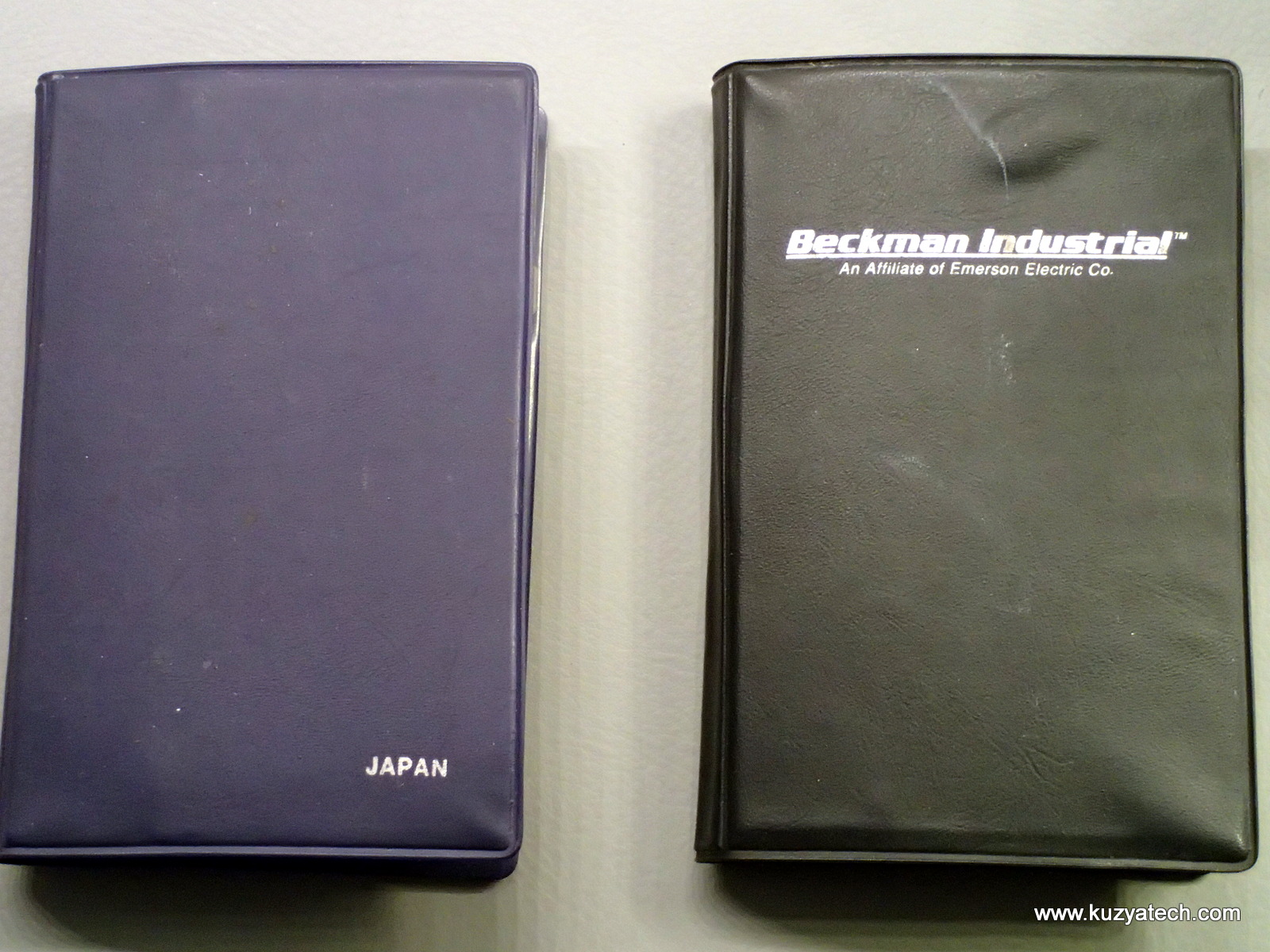

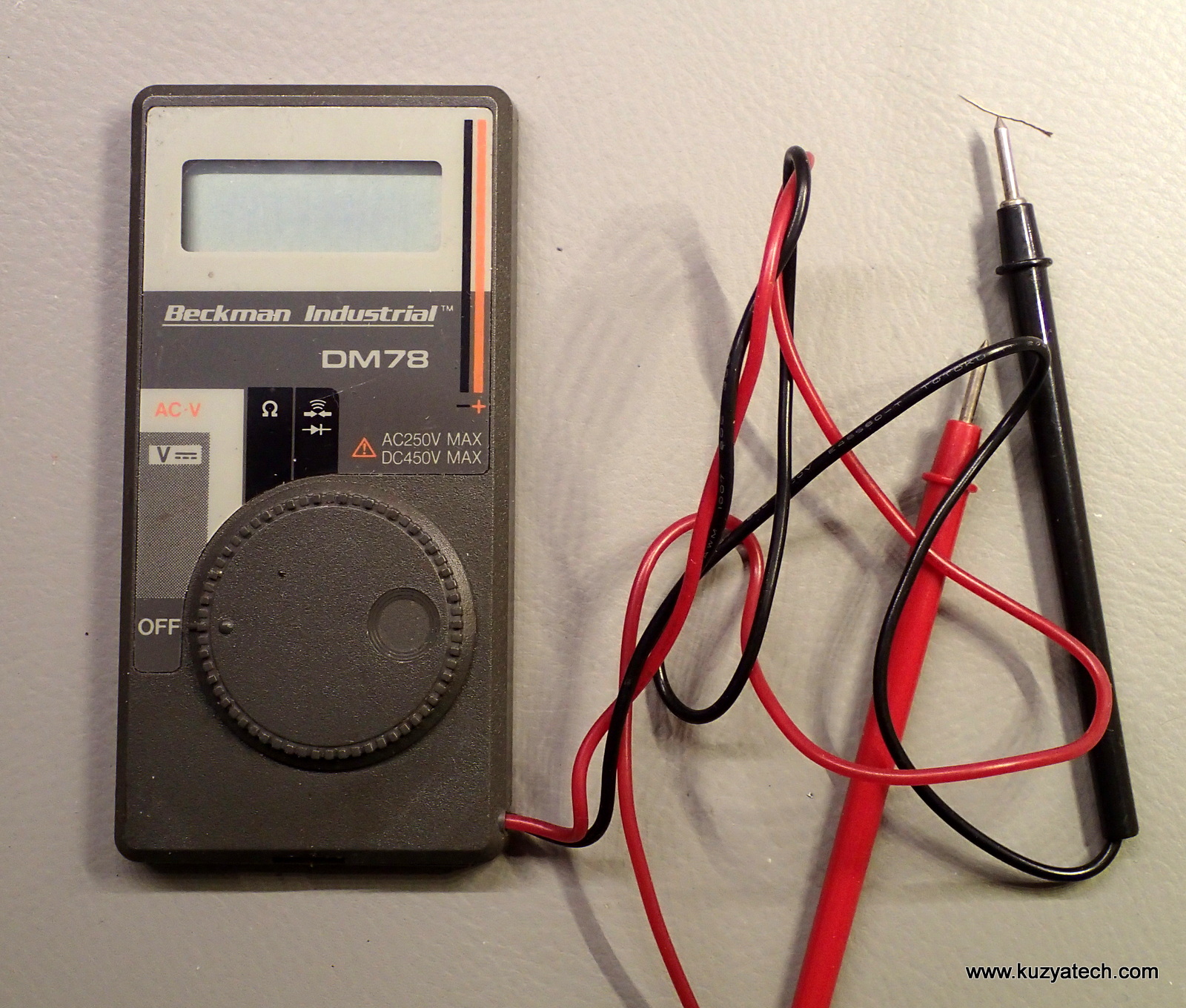




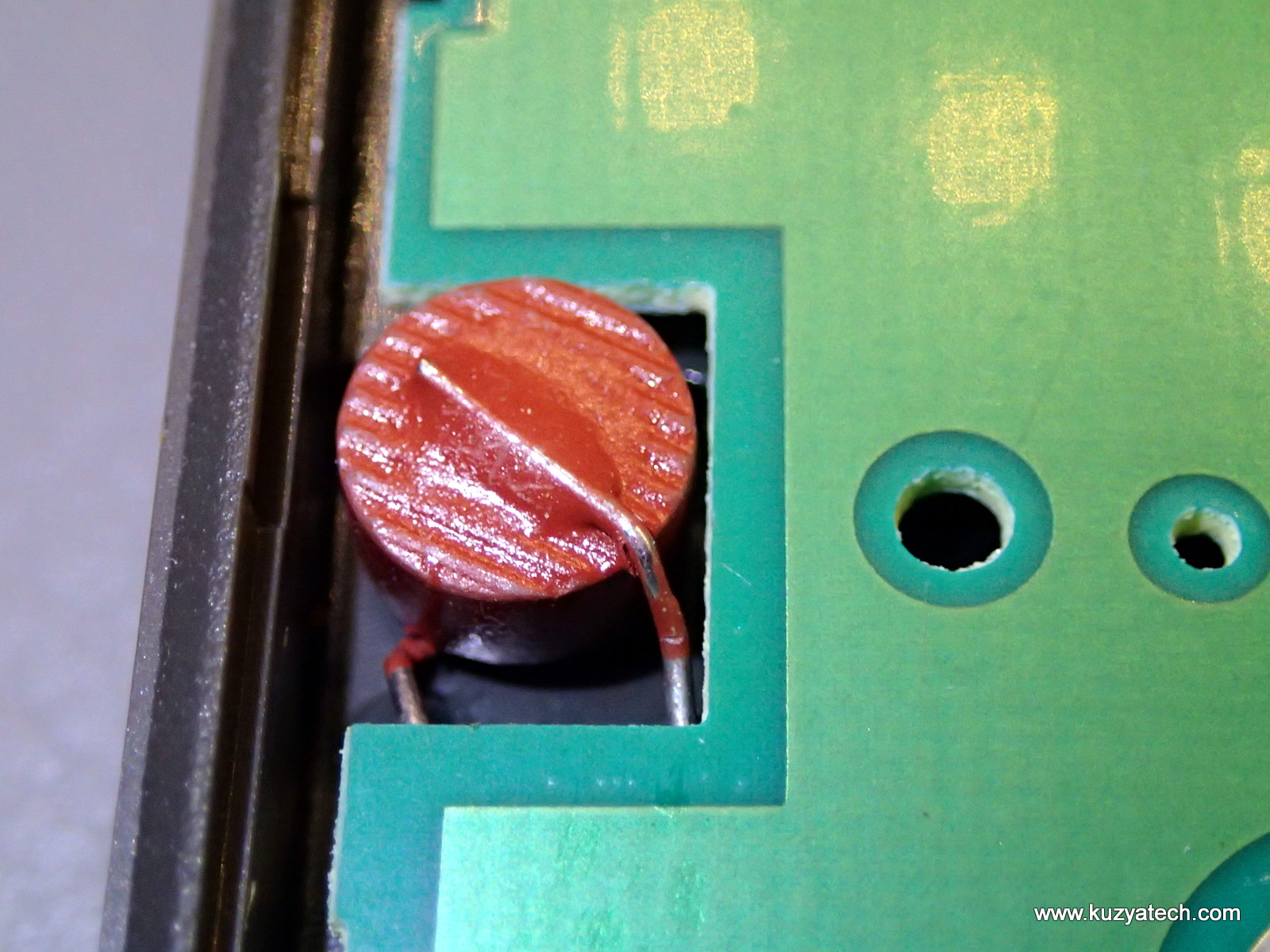

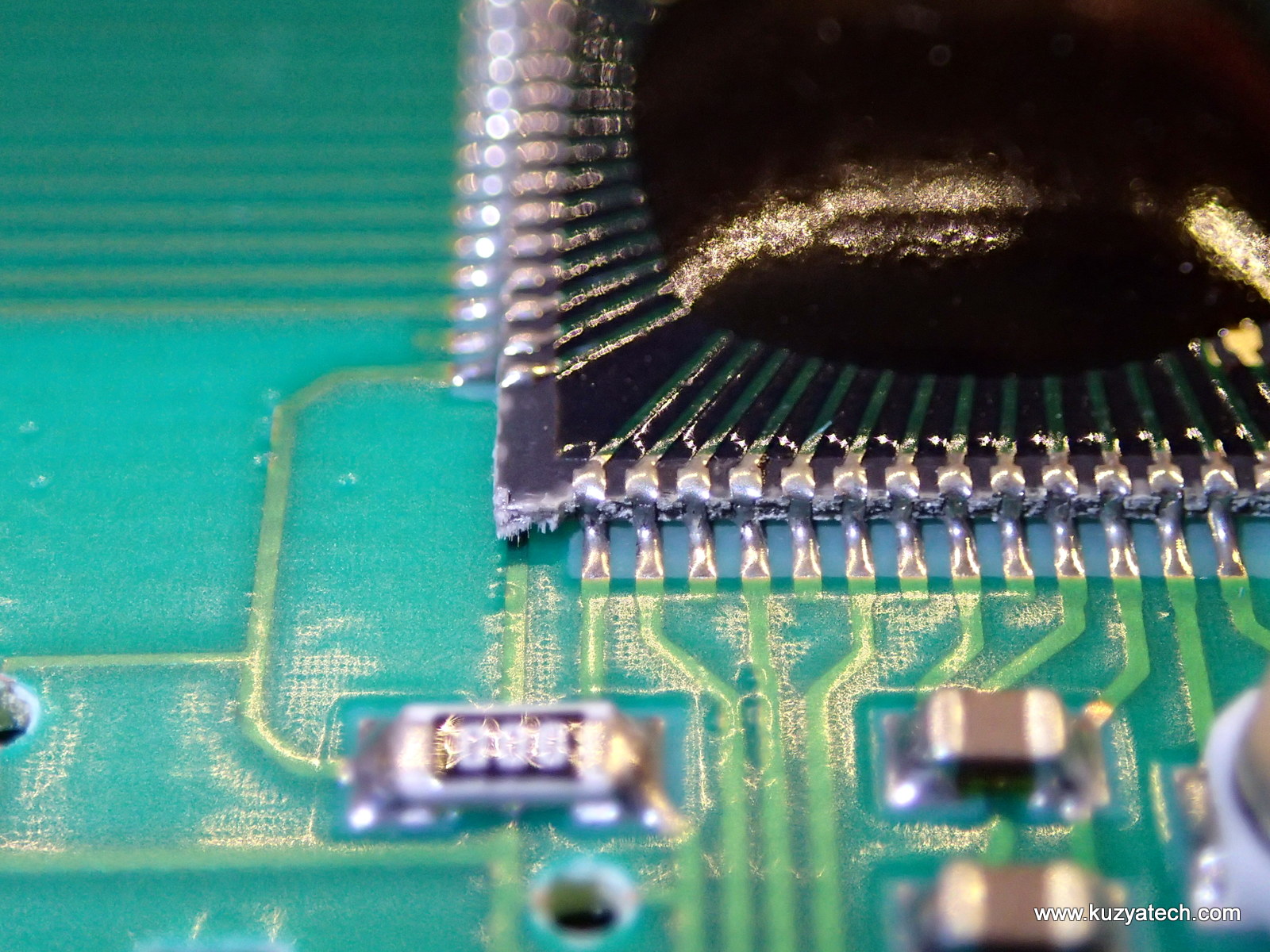
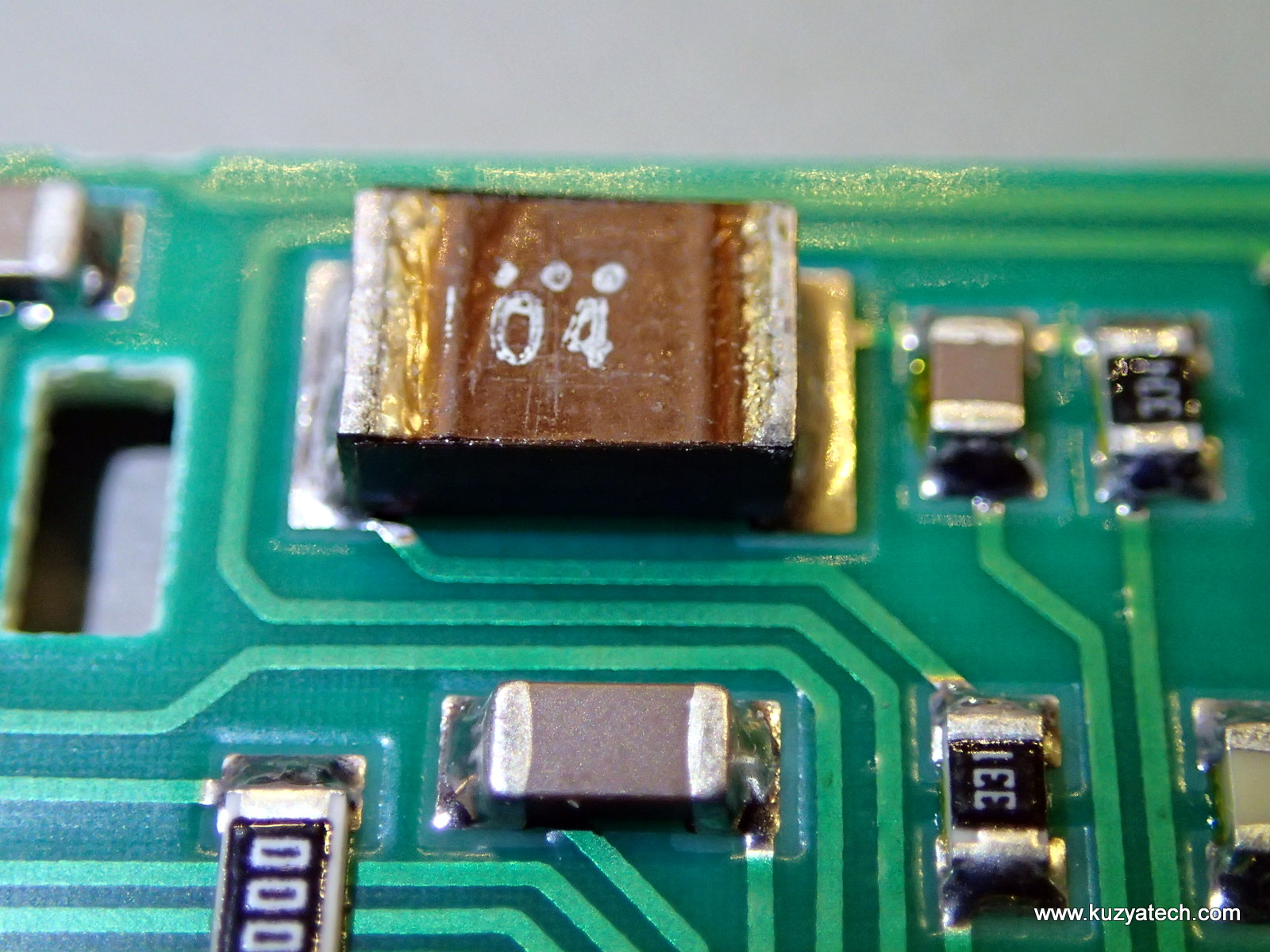

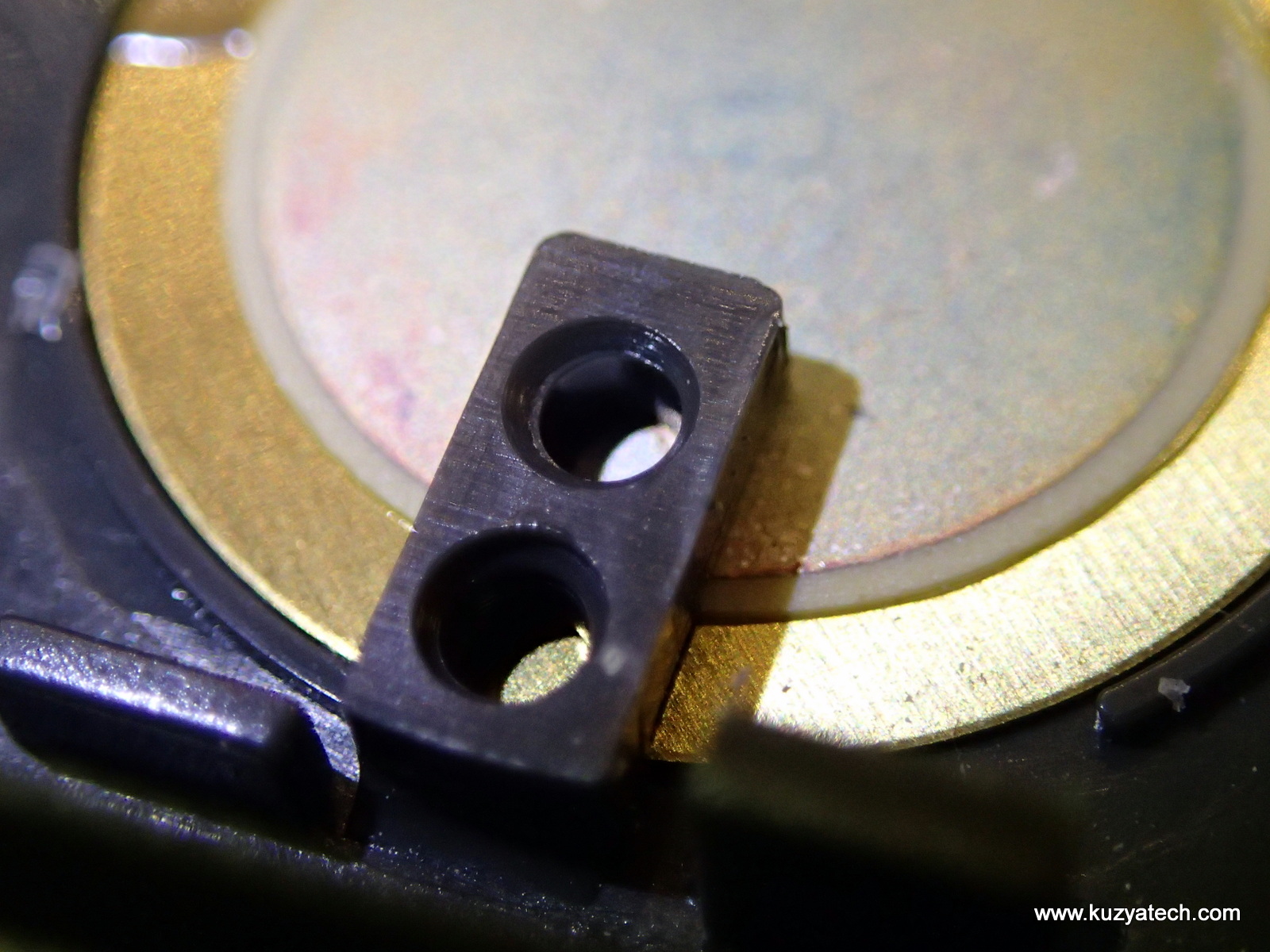
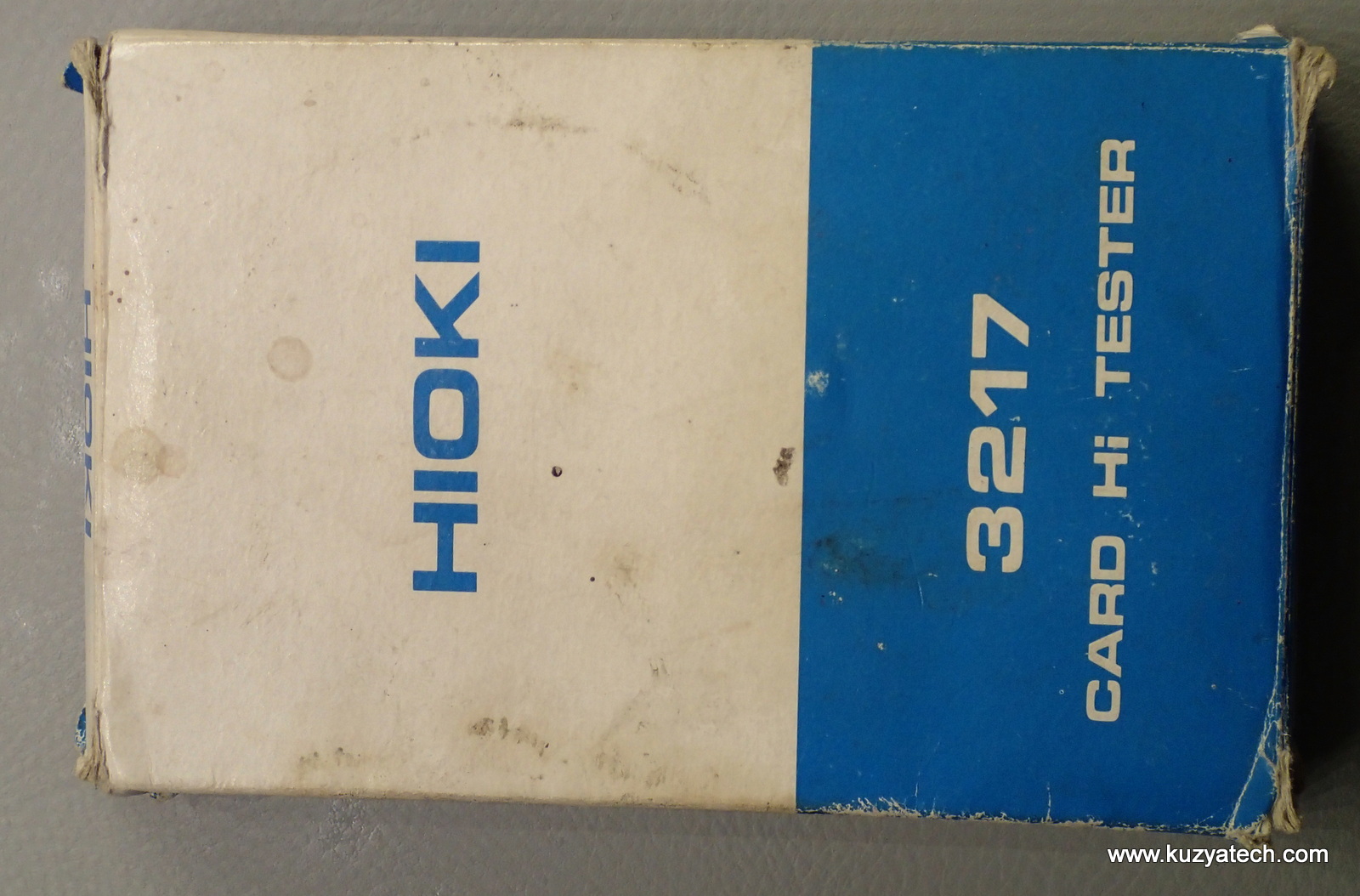
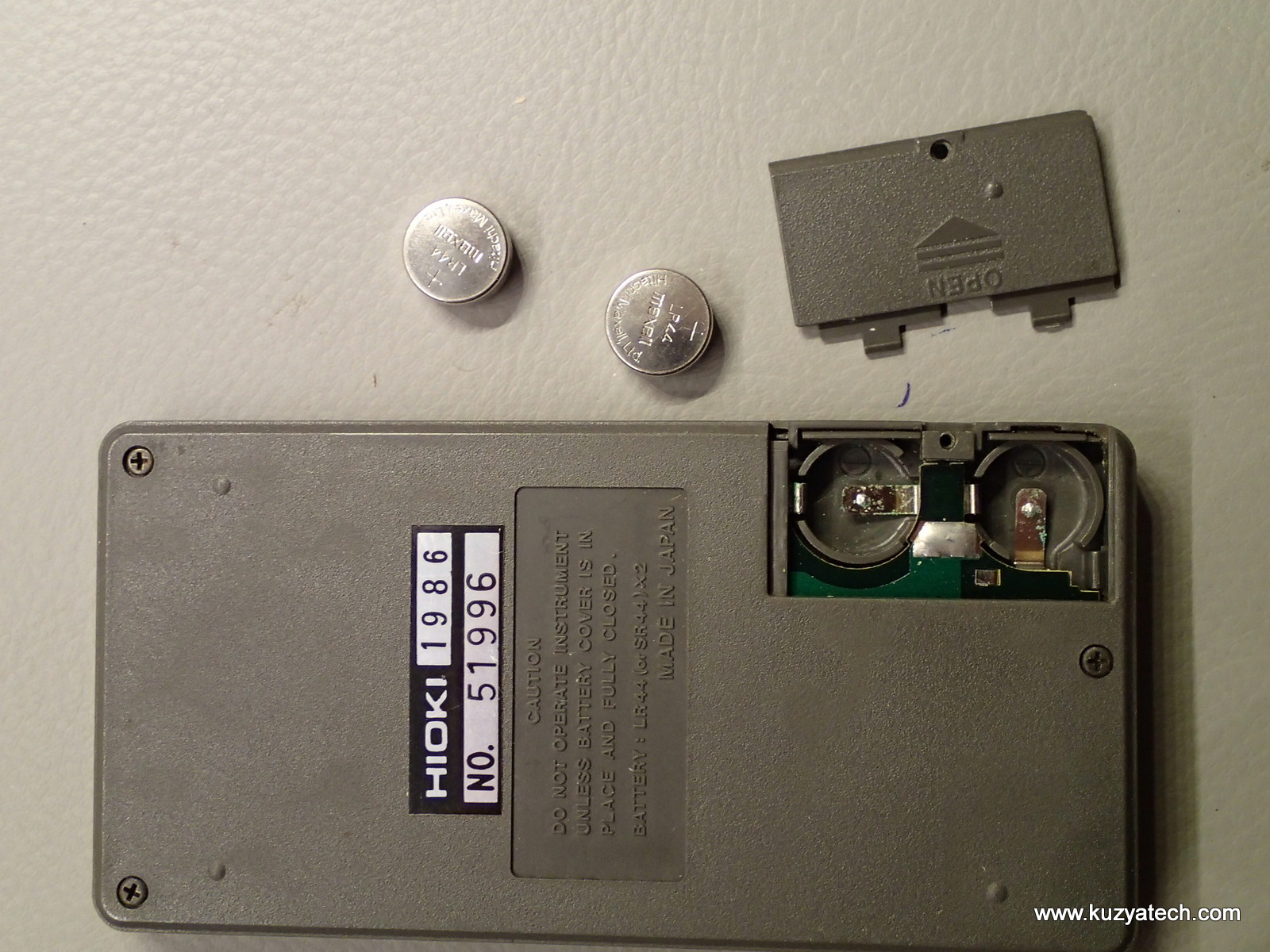

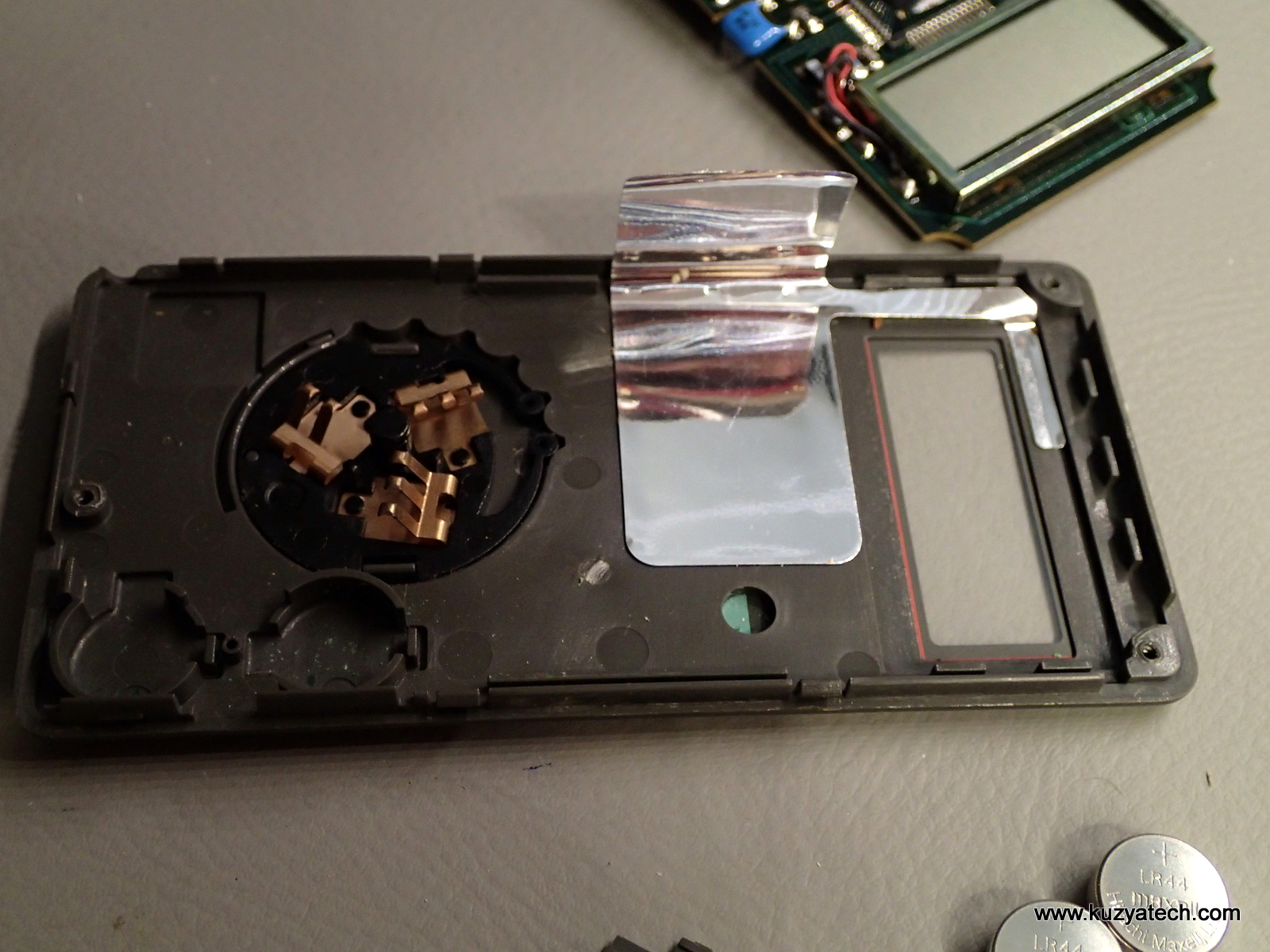
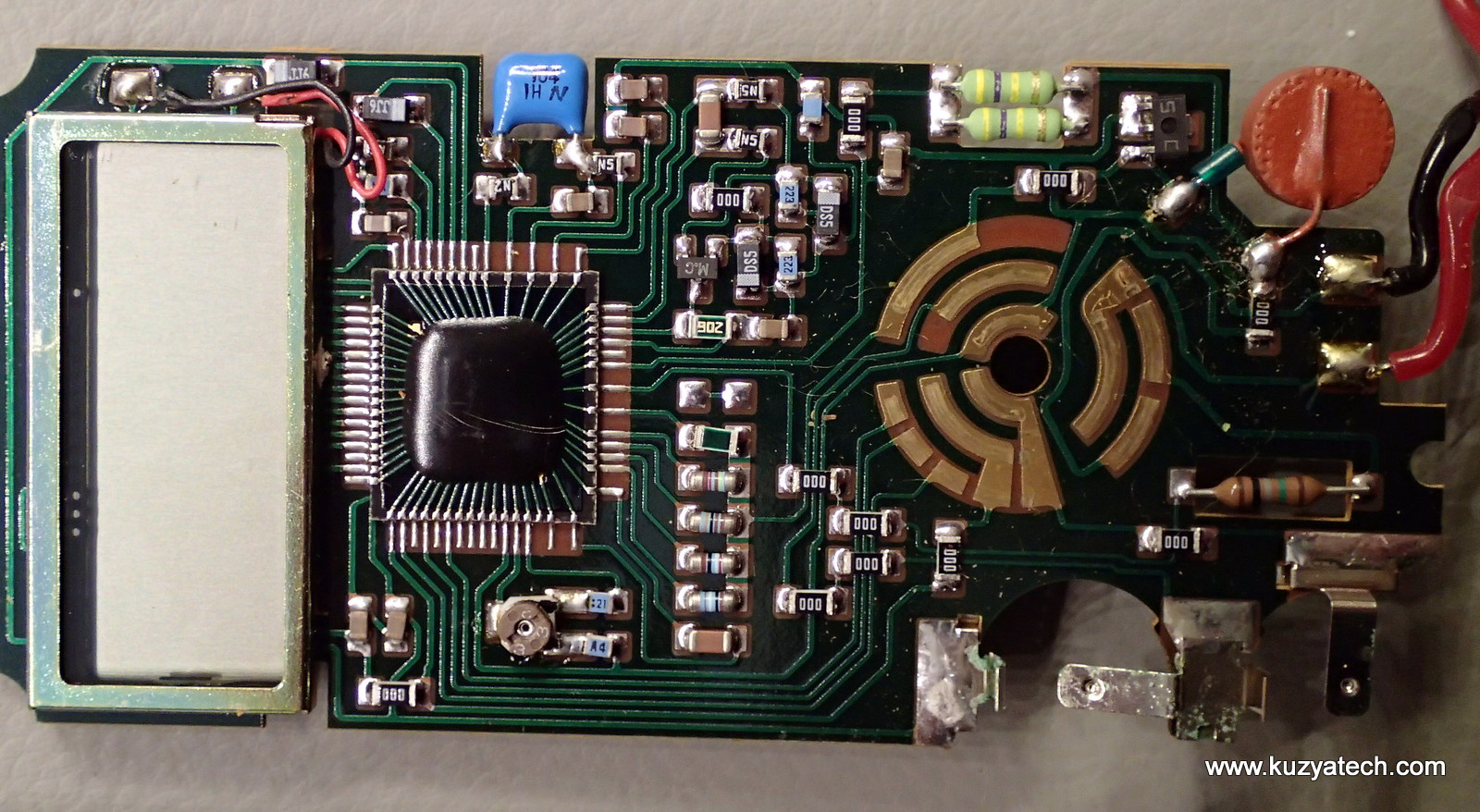
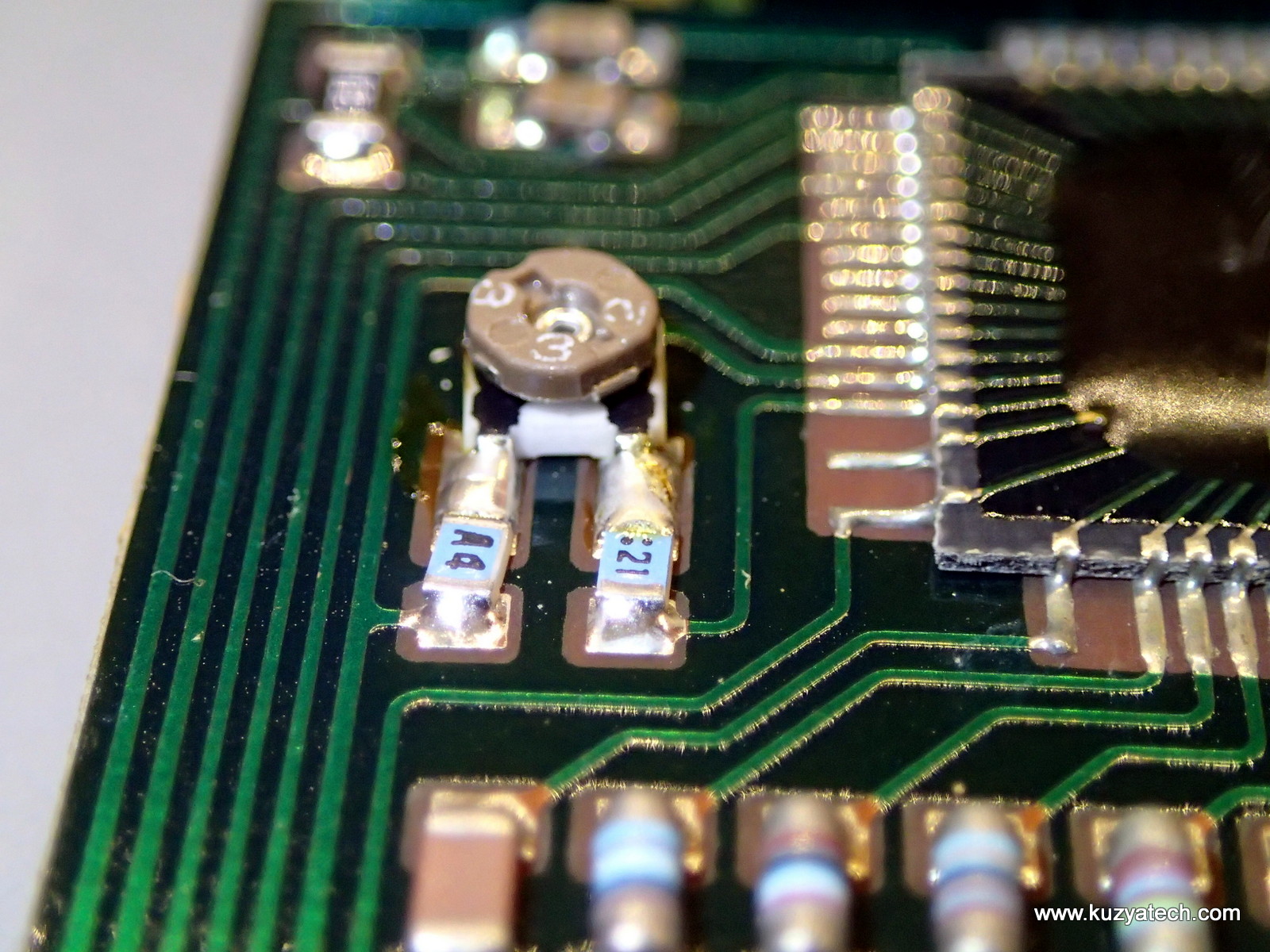
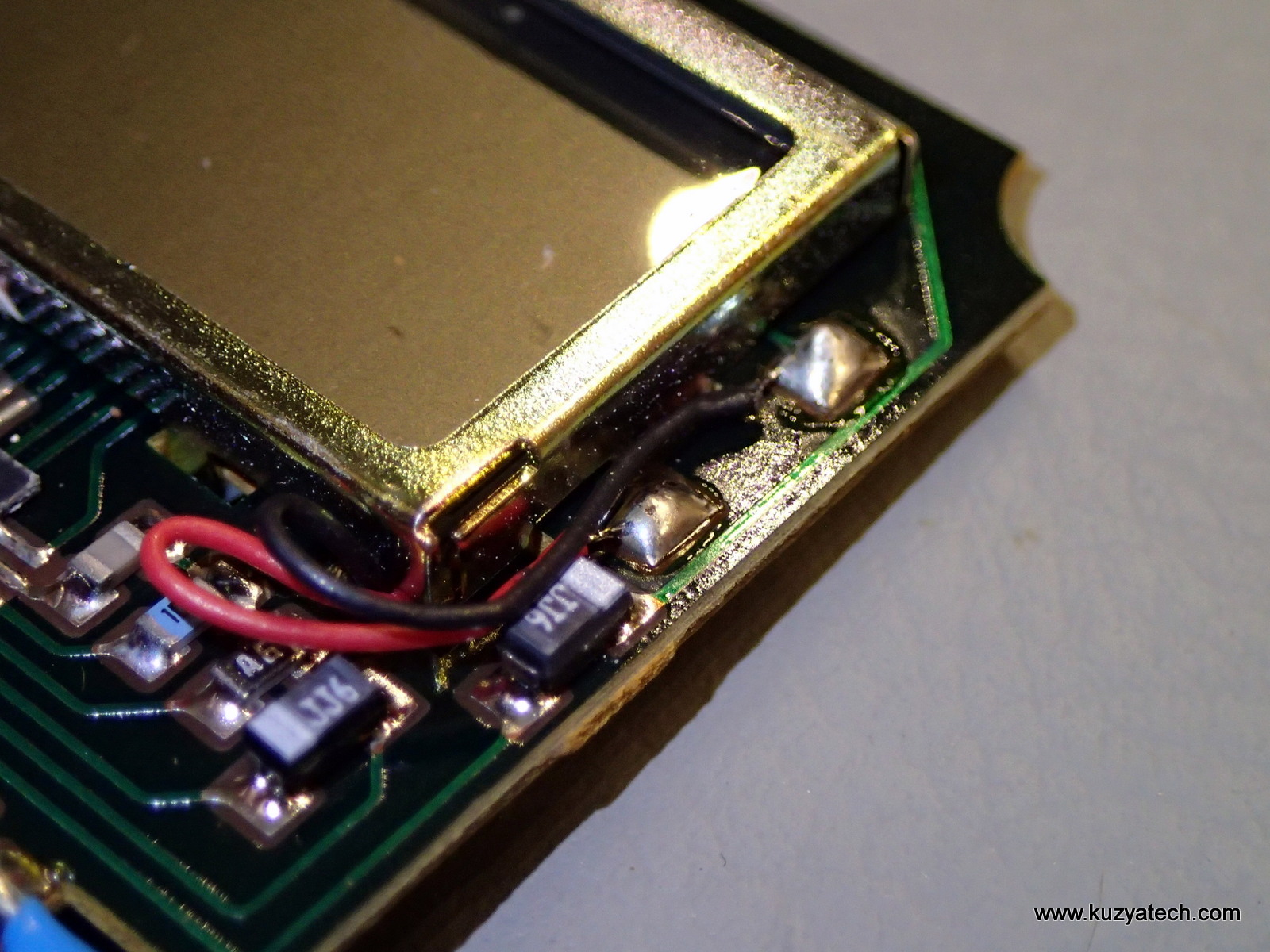

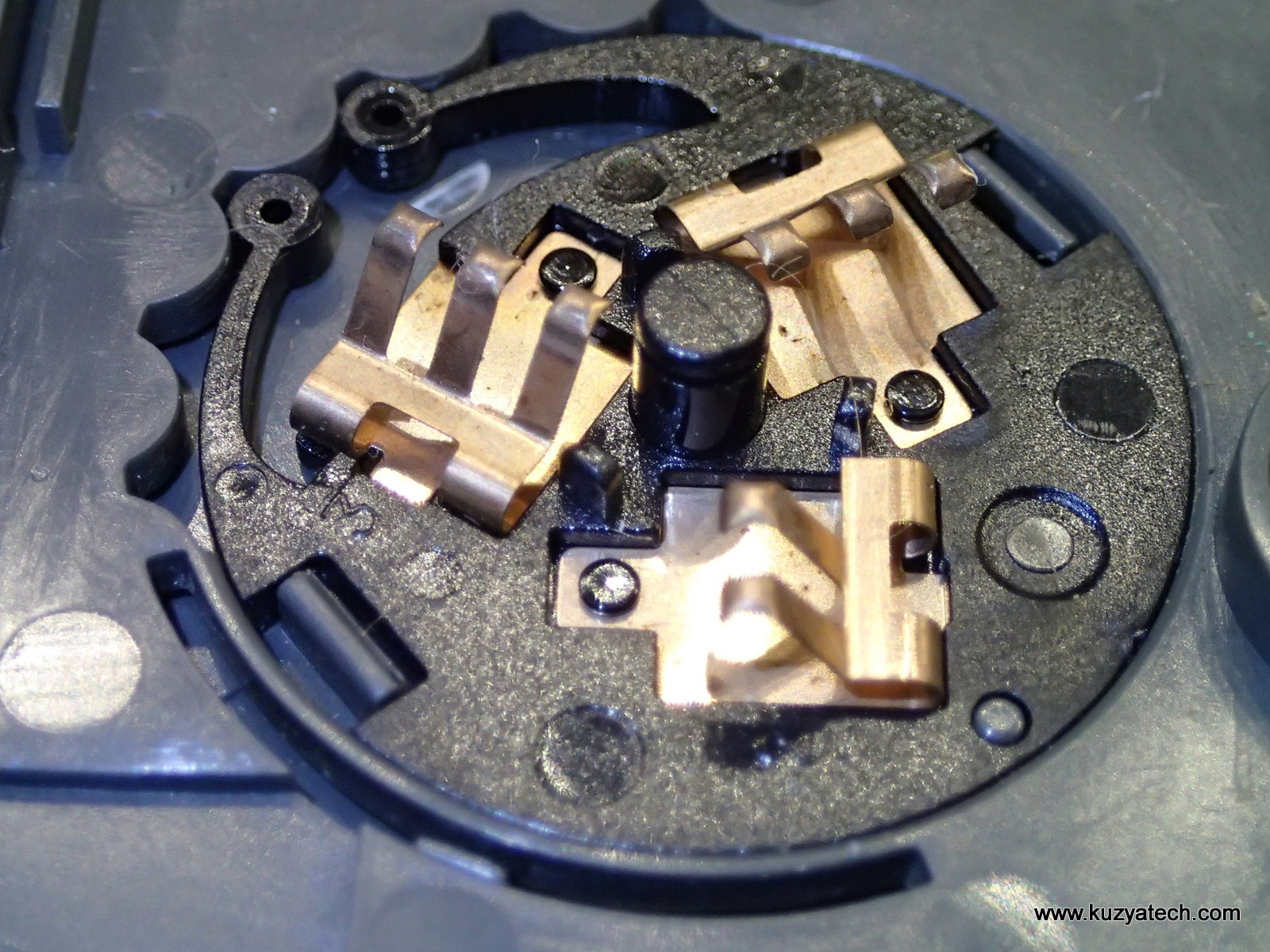
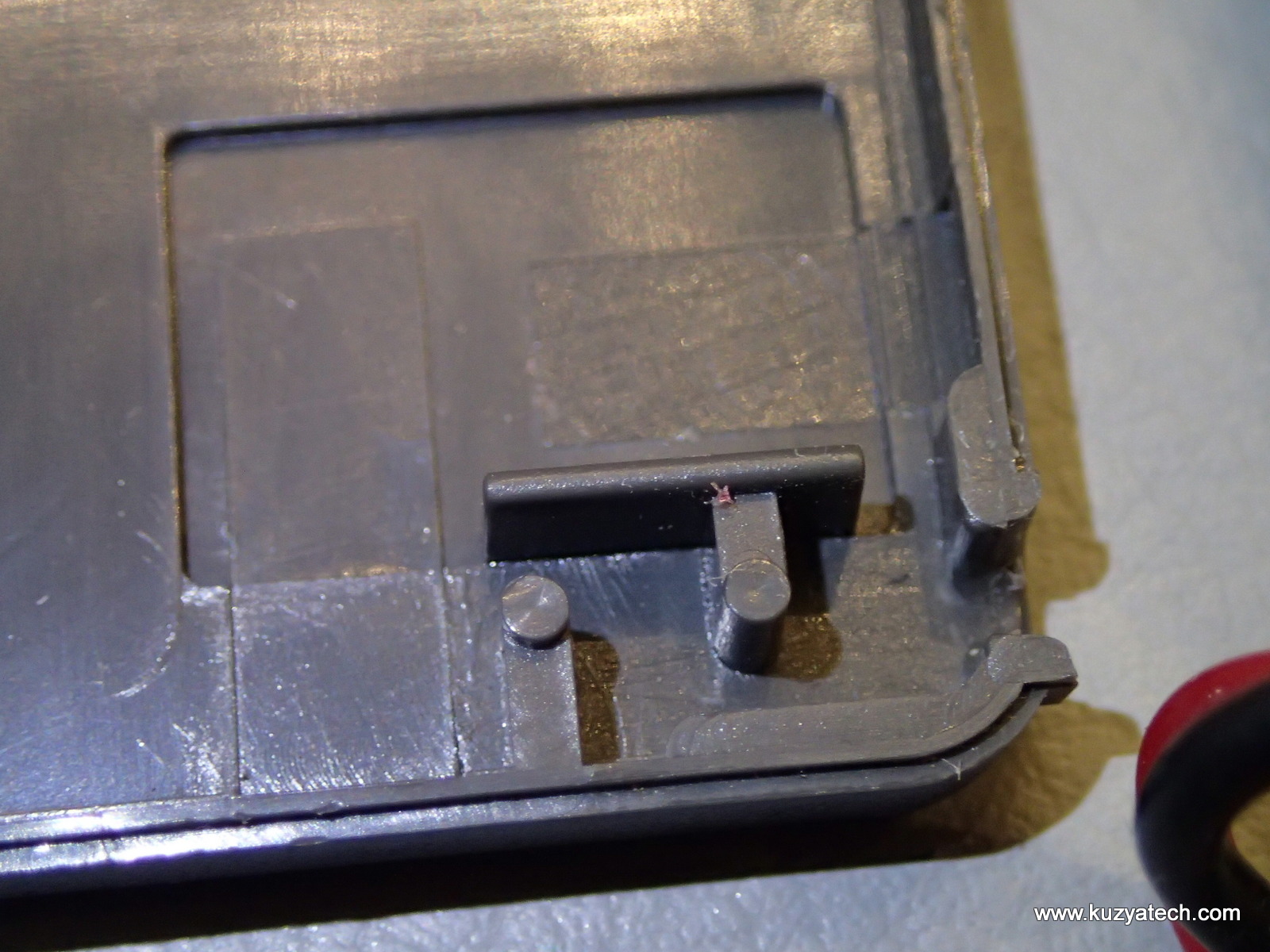
Mine is a hybrid. It is like the DM78 on the front but the back and battery compartment is like the Hioki. The internals are the same as the Hioki with wired buzzer and display attached to the board. My first meter, bought new in the 90s for very little. I need a new display for it.
Thanks for this post. Because of it, I was able to disassemble my Beckman, clean the contact slides on the dial, and make it work like new! It’s now good for another 25 years of trustworthy service.
One think you might mention is that one has to be very careful with the small black rubber? conductive cylinders that make contact with the piezo buzzer mounted on the front of the case. They are very small and are easy to lose. When removing the circuit board, one should be careful to look for the cylinders. In my case, one remained in the plastic housing on the front cover with the buzzer, but the other came off with the board. When I examined the board, I wondered what the strange component was that made only one contact with the board. Later, I heard something fall to the floor. Sure enough, the strange component was gone, and the buzzer didn’t work when I reassembled the unit. I did manage to find the missing piece, but it would have been nice to have been warned.
Thanks, again, for this post. I am grateful that you have returned my beloved meter to service.
Regards,
K.
This is a very good piece of tool
That was very usable up to this time,
Mine is DM78, excellent
tenho um dm 78 , mas infelizmente quebrou o display e não consegui outro
Hi there,
now that is what I call a neat report. Short, sweet, to the point. I also own a Beckman DM78. Age unknown, I got it given by a friend in the mid 90s and it was used then. I am still using it today and it has been the most reliable meter. Due to its size it is very handy around the office and workshop. The only issue I have is a bit of oxidation of the selector slide pads after a few weeks of inactivity. A few turns on the selector back and forth usually clears that pretty quickly, no need for taking it apart yet. I am a believer in the mantra: “If not broken don’t fix it”.
Mine is still in its little flip-open plastic pouch. All the plastics used are still very supple, no brittleness anywhere to be observed. The self-hinged battery cover I find quite neat, especially since the plastic is still very bendy. Quality materials have been obviously used in the processes. I am extremely happy with it and proud that I have a piece of equipment that reliably goes through live with me. Well done “Beckman Industrial”.
Mike
Mine is a RadioShack CIRCUITMATE DM78 I received it as a gift recently. The battery door is missing, it lit right up when I put new batteries in. I check the voltage of the batteries and they were 1.62v and 1.57v. I turned it on the display was flashing, and about every 5 or 6 flashes it would beep. My unit looks like the battery door slid into place. does any of you know if the screen flashing and the beeping are cause by the battery door not being closed? I do not have one but I am sure I can figure out how to make it think the door is in there.
If not the missing battery door, has anyone had a problem with the screen flashing< while displaying random number groupings. It does the flashing in all measurements. I can not use it to measure any type of reading, DC, AC, Ohms etc. Does anyone have any ideas to help me fix my DM78. I really like the compact size and easy probe access and storage.
Thank you for doing this nice comparison it has helped a lot. If anyone has any ideas on why it is flashing please let me know. My dial contacts are corrosion free and in like new condition.
My “HIOKI 3217, CARD HI TESTER” says “HIOKI 1986, No. 12722” on the back. I think I did buy it in the 1980’s from Electrosonic in Toronto, Canada. It still works, don’t know its accuracy. It has been very handy over the years burt every time I go to use it I need new batteries.
My Beckmann model dm78 still working.guessing from mid 90s. funny thing about Beckmann my 330 still works also. Fluke rep would bring bench calibrator to local wholesale supply house for comparison with non fluke meters. Calibrator set at 2.00 volts, 330 read 2.00. Cali.set at 20.00. 330 read 20.00.same at 200 volts.
Fluke guy was confused about how it (330) was so accurate across the board, and was talking about voltage dividers etc etc etc.
Wanted to take a peak inside the meter, and then wanted to trade fluke for Beckmann.
We became good friends. Time passes, Beckmann becomes Beckmann industrial, quality goes down, fluke still around. I miss fluke made in USA, and their warranty. Oh well, ubla dee, ubla da, life goes